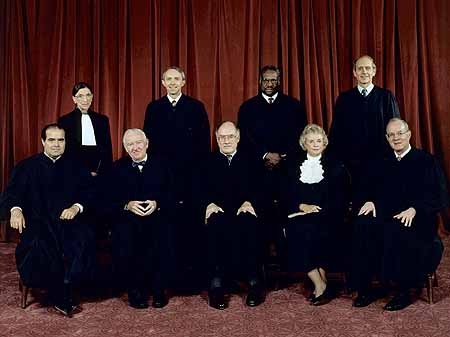|
Game, Game, Game... Set, Match

JUNE 24, 2010 - John Isner of the United States defeated Nicolas Mahut of France in the first round of the 2010 Wimbledon Championships, in the longest match in professional tennis history. The match lasted a total of 11 hours, 5 minutes and took place over a three-day period, with a final score of 6-4, 3-6, 6-7, 7-6, 70-68, for a total of 183 games. The match began at 6:13 pm on Tuesday, June 22. By 9:07 pm each player had won two sets and the match was suspended due to fading light. The match resumed the following day at 2:05 pm, breaking the previous record for longest match ever played at 5:45 pm, and continuing on until 9:10 pm when the match was suspended yet again with the final set tied at 59 games all. Play resumed at 3:43 pm on Thursday, June 24, and Isner finally won at 4:48 pm, the final set alone having lasted 8 hours, 11 minutes. At one point, even the scoreboard could not keep up with the players. It had only been programmed to go up to 50 games and quit working once the set surpassed that figure. Technicians had to come in and reprogram the scoreboard before the final day of play. Watch highlights of the record-setting match here.
|
|
All or Nothing

JUNE 25, 1998 - In the case of Clinton v. City of New York, the United States Supreme Court ruled that the Line Item Veto Act of 1996 was unconstitutional. The Act, which was passed by Republican majorities in both houses of Congress as part of their Contract with America, allowed the President to delete certain provisions of appropriation bills without vetoing the entire bill. The 6-3 Supreme Court decision ruled that allowing the President to unilaterally amend bills violated the Presentment Clause of the Constitution. According to the Court a bill must be approved or rejected by the President in its entirety.
|
|
Scan This
 JUNE 26, 1974 - A 10-pack of Wrigley's Juicy Fruit chewing gum, selling for 67 cents, was the first item ever scanned at a retail checkout using the Universal Product Code (UPC) labeling. It happened at 8:01 a.m. at Marsh's supermarket in Troy, Ohio. The shopper was Clyde Dawson and cashier Sharon Buchanan made the first UPC scan. The UPC was developed by a group of grocery industry trade associations which formed the Uniform Grocery Product Code Council. A number of technology companies proposed a variety of symbols to be used for the UPC, but it was ultimately a modified version of the IBM proposal that became what is commonly known today as a bar code. The first scanner later went on display at the Smithsonian Institution's National Museum of American History in Washington, D.C. |
|
"We played the greatest match ever in the greatest place to play tennis"
- Nicolas Mahut
|
We've Moved!
(but not too far)
Hirschi Law Group has moved to the office next door. Please make a note of our new address:
18275 N 59th Ave
Bldg J, Ste 160
Glendale, AZ 85308
(We are in the same office as Canyon Lands Insurance.)
|
Historical Archives
Read past editions of our This Week in History newsletter any time in our Archives.
|
|